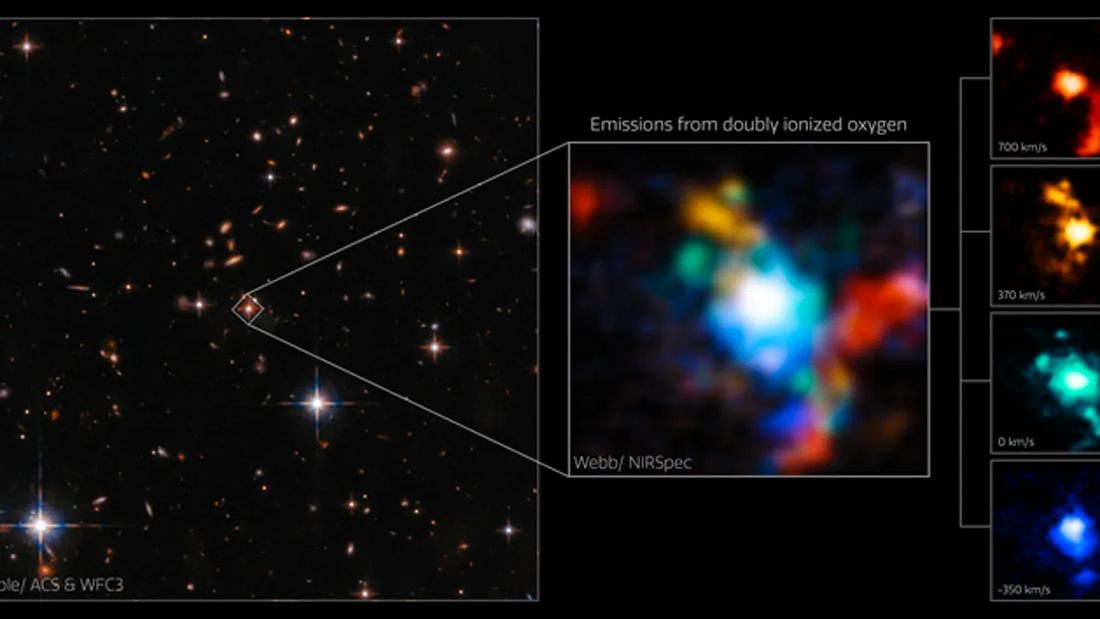
JWST Reveals "... Far Fewer" Blackholes Than We Thought
Share
The James Webb Space Telescope (JWST) has unveiled a surprising revelation about the universe's supermassive black holes (SMBHs). These enormous black holes, found at the centers of nearly every galaxy, may be far less active during their growth phases than previously believed.
While almost every galaxy hosts a supermassive black hole, researchers have struggled to detect young black holes in the act of actively consuming matter. These SMBHs, which grow rapidly during their youth and emit bright radiation, are referred to as active galactic nuclei (AGN). Our own Milky Way, for instance, is believed to have a relatively dormant SMBH, with its active phase long past. Most SMBH growth occurred approximately 7 to 11 billion years ago.

MIRI Pointing 1 (right panel) alongside the Spizter/IRAC (middle) and MIPS (left) observations of the same region. (Image credit: Kirkpatrick, et. al.)
In a recent study, astronomers used NASA's James Webb Space Telescope to search for actively growing black holes during their prime growth periods. They surveyed a region of the sky containing around 400 galaxies located billions of light-years away, providing a glimpse into their growth phases billions of years ago.
The results of this research challenge previous assumptions. Astronomers had expected that even "average-sized" black holes, such as the one in the Milky Way, would exhibit signs of rapid growth, given the observed rapid development of larger AGNs. However, despite the JWST's increased sensitivity, researchers found fewer actively growing teenage AGNs than anticipated. This discovery suggests that the population of active black holes is smaller than previously estimated.

Installation of MIRI into the instrument module of the James Webb Space Telescope. (Image credit: NASA)
Studying these average galaxies also shed light on the history of our Milky Way. If many galaxies, including ours, lack detectable AGNs, it implies that our own black hole may have been less active in the past.
The researchers plan to expand their study to include thousands of galaxies, offering a more comprehensive understanding of how smaller galaxies develop their black holes and evolve into the galaxies we observe in the present day.
You’ve come this far…
Why not venture a little further into A.S.S. - our exclusive Australian Space Society.
And keep thrusting Australia into the deep unknown…
#Space_Aus




